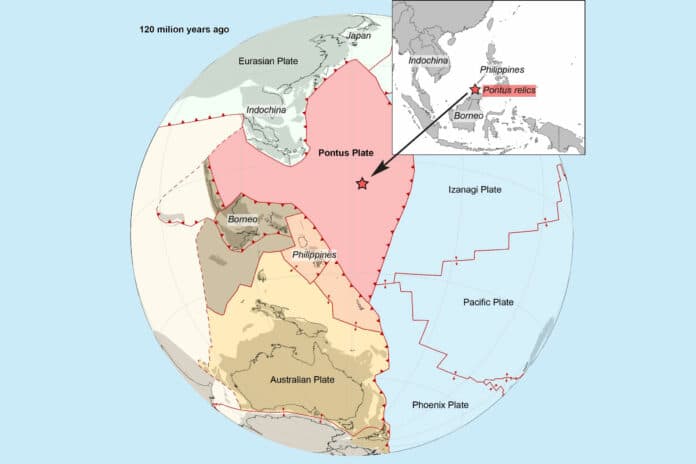To comprehend the earth’s geological history, it is crucial to understand the motions of the tectonic plates that make up the planet’s tough outer shell. However, large oceanic plates from the geological past have since been subducted into the earth’s mantle. They merely left behind a few rock shards now hidden in mountain ranges.
Utrecht University geologist Suzanna van de Lagemaat studied the planet’s most complicated plate tectonic region: the area around the Philippines. She has reconstructed a massive and previously unknown tectonic plate that was once one-quarter the size of the Pacific Ocean.
Through fieldwork and thorough examinations of the mountain ranges in Japan, Borneo, the Philippines, New Guinea, and New Zealand, Van de Lagemaat reconstructed lost plates. She was shocked to discover that marine traces on northern Borneo must have belonged to the long-suspected plate, Pontus. She has now wholly recreated the plate in all its splendor.
Douwe van Hinsbergen, Van de Lagemaat’s Ph.D. supervisor, said, “We also conducted fieldwork on northern Borneo, where we found the most important piece of the puzzle. We thought we were dealing with relics of a lost plate that we already knew about. But our magnetic lab research on those rocks indicated that our finds were originally from farther north and had to be remnants of a different, previously unknown plate.”
“But the important realization was yet to come. 11 years ago, we thought that the remnants of Pontus might lie in northern Japan, but we’d since refuted that theory.”
“It was only after Suzanna had systematically reconstructed half of the ‘Ring of Fire’ mountain belts from Japan, through New Guinea, to New Zealand that the proposed Pontus plate revealed itself, including the rocks we studied on Borneo.”
Because a subducted plate leaves zones in the earth’s mantle with abnormal temperatures or compositions as it “sinks” into the cover, prior predictions of the existence of Pontus were made possible. Seismographs that detect earthquake signals can detect these irregularities. Earthquakes drive waves through the planet’s interior, and when those waves encounter an anomaly, like a piece of an ancient plate, the anomaly causes a signal interruption.
Geologists can link these disruptions to the presence of mantle phenomena like tectonic plate pieces. The older plate fragments had ‘dissolved’ at the mantle-core border, allowing them to look back 300 million years. An extensive subduction zone must have divided the fictitious Pontus plate in the west from the known Pacific plates in the east in the western paleo-Pacific, according to research conducted 11 years ago. Van de Lagemaat’s study has now independently supported this theory.
Journal Reference:
- Suzanna H.A. van de Lagemaat, Douwe J.J. van Hinsbergen. Plate tectonic cross-roads: Reconstructing the Panthalassa-Neotethys Junction Region from Philippine Sea Plate and Australasian oceans and orogens. Gondwana Research. DOI: 10.1016/j.gr.2023.09.013
